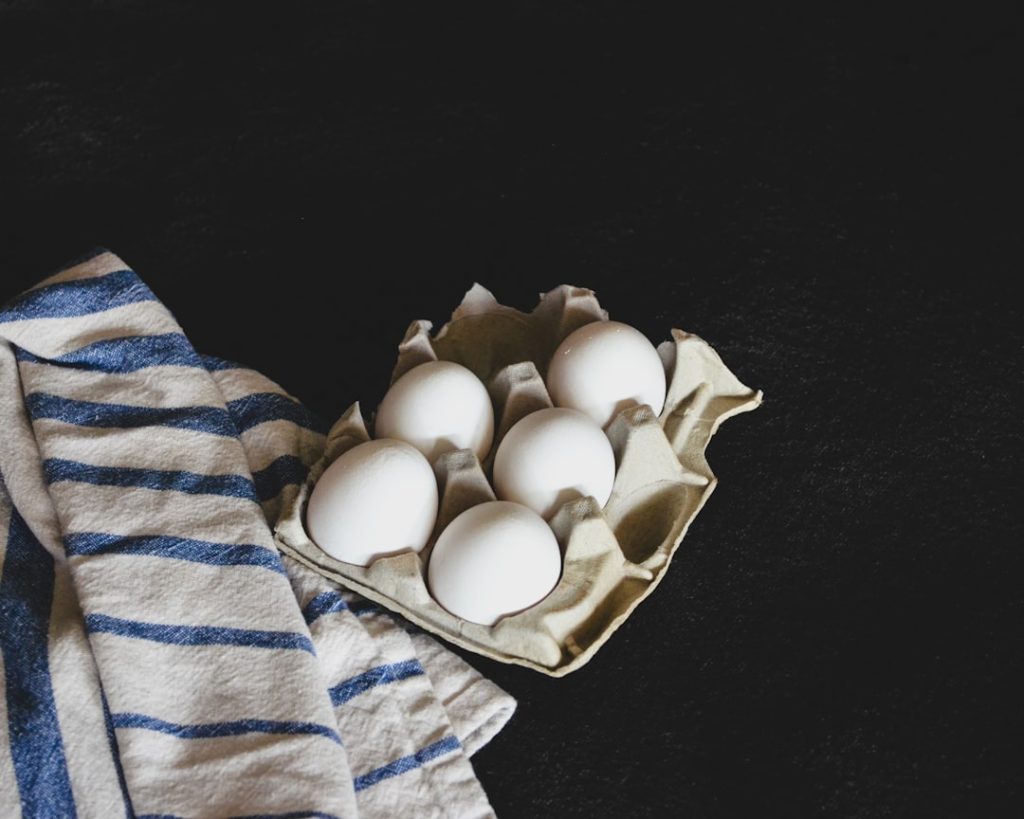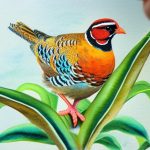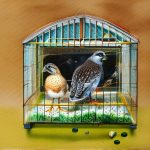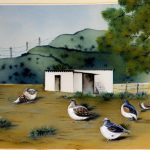The Quail Finch, also known as the African Quail Finch or the Orange-breasted Waxbill, is a small, colorful bird native to sub-Saharan Africa. These finches are popular among bird enthusiasts for their vibrant plumage and lively personalities. Quail Finches are social birds that thrive in small flocks, and they are known for their cheerful chirping and active nature. In the wild, they can be found in grasslands, savannas, and open woodlands, where they forage for seeds and insects. In captivity, Quail Finches are relatively easy to care for and breed, making them a popular choice for aviculturists.
Quail Finches are sexually dimorphic, meaning that males and females have different physical characteristics. Males are typically more brightly colored, with vibrant orange or red breasts, while females have more subdued plumage. These birds are generally peaceful and can be kept with other small finch species as long as there is enough space and resources for all the birds. Quail Finches are known for their acrobatic flying and love of bathing, so providing them with plenty of space to move around and bathe is essential for their well-being. Understanding the natural behaviors and habitat preferences of Quail Finches is crucial for successfully breeding and caring for these delightful birds.
Table of Contents
Key Takeaways
- Quail finches are small, colorful birds native to Australia and are known for their social nature and active behavior.
- When selecting breeding pairs, it is important to choose healthy, unrelated birds with vibrant plumage and good genetic diversity.
- Setting up the breeding environment involves providing a spacious cage with nesting materials, a variety of perches, and a balanced diet rich in protein and calcium.
- Breeding behavior and courtship in quail finches include singing, dancing, and mutual grooming, with the male often presenting food to the female as a courtship ritual.
- Caring for quail finch chicks involves providing a warm, quiet, and clean environment, along with a diet of soft foods and regular monitoring for any signs of illness or distress.
- Common breeding challenges for quail finches include egg binding, infertility, and aggression between breeding pairs, which can be managed through proper nesting conditions and careful observation.
- Tips for successful quail finch breeding include regular health checks, providing a stress-free environment, and seeking advice from experienced breeders or avian veterinarians.
Selecting Breeding Pairs
When selecting breeding pairs of Quail Finches, it is important to choose healthy, unrelated birds with strong genetic traits. Look for birds that are active, alert, and have bright, glossy feathers. Avoid birds that appear lethargic or have any signs of illness or deformities. It is also crucial to ensure that the birds you select are of breeding age, which is typically around 6-9 months old. Breeding pairs should be housed in spacious aviaries or cages to allow for natural behaviors such as courtship displays and nest building.
It is best to pair one male with one female to prevent aggression and ensure successful breeding. When introducing a new pair, it is essential to monitor their interactions closely to ensure that they get along well. If there is any sign of aggression or stress, it may be necessary to separate the birds and try different pairings. Selecting breeding pairs of Quail Finches requires careful observation and consideration of each bird’s temperament and compatibility. By choosing healthy, unrelated birds and providing them with a suitable environment, you can increase the likelihood of successful breeding and healthy offspring.
Setting Up the Breeding Environment
Creating a suitable breeding environment is essential for the successful reproduction of Quail Finches. In the wild, these birds build their nests in grassy areas or shrubs, so providing them with natural nesting materials such as grass, coconut fiber, and soft twigs is important. Breeding pairs should be housed in spacious aviaries or cages with plenty of perches and hiding spots to allow for natural behaviors such as courtship displays and nest building. It is also crucial to provide a variety of nesting options, such as open nests or enclosed nest boxes, to accommodate the preferences of different pairs.
Quail Finches are sensitive to temperature extremes, so it is important to maintain a stable temperature in the breeding environment. Providing a heat source such as a ceramic heat emitter or heat pad can help regulate the temperature and create a comfortable environment for the birds. Additionally, ensuring that the breeding environment is free from drafts and excessive noise is essential for reducing stress and promoting successful breeding. By creating a suitable breeding environment with natural nesting materials, varied nesting options, and a stable temperature, you can provide Quail Finches with the ideal conditions for successful reproduction.
Breeding Behavior and Courtship
Quail Finches are known for their lively courtship displays, which involve elaborate dances, vocalizations, and displays of colorful plumage. During courtship, males will often puff up their feathers, hop around the female, and sing melodious songs to attract her attention. The female will respond by fluttering her wings and performing subtle movements to indicate her interest in the male. Once a pair has formed, they will work together to build a nest using grass, feathers, and other soft materials.
After the nest is built, the female will lay a clutch of eggs, typically ranging from 4-6 eggs. Both parents will take turns incubating the eggs for about 12-14 days until they hatch. Once the chicks have hatched, both parents will take on the responsibility of feeding and caring for the young. Understanding the breeding behavior and courtship displays of Quail Finches is essential for recognizing when a pair is ready to breed and providing them with the necessary support for successful reproduction.
Caring for Quail Finch Chicks
Caring for Quail Finch chicks requires careful attention to their dietary needs and development. Once the chicks have hatched, it is important to provide them with a warm, draft-free environment to promote healthy growth. The parents will feed the chicks a diet of regurgitated seeds and insects, but it may be necessary to supplement their diet with soft foods such as egg food or sprouted seeds to ensure that they receive enough nutrients.
As the chicks grow, they will become more independent and start exploring their surroundings. Providing them with plenty of perches and safe toys to play with can help stimulate their physical and mental development. It is also important to monitor the chicks closely for any signs of illness or developmental issues and seek veterinary care if necessary. By providing attentive care and a nutritious diet, you can help ensure that Quail Finch chicks grow up healthy and strong.
Common Breeding Challenges

While breeding Quail Finches can be a rewarding experience, there are some common challenges that breeders may encounter. One challenge is ensuring that breeding pairs are compatible and get along well. If there is any sign of aggression or stress between a pair, it may be necessary to separate them and try different pairings. Another challenge is providing a suitable nesting environment that meets the preferences of different pairs. Some pairs may prefer open nests, while others may prefer enclosed nest boxes, so offering a variety of nesting options is important.
Another common challenge is ensuring that both parents are actively involved in caring for the chicks. In some cases, one parent may neglect its parental duties, leading to poor chick survival rates. Providing a supportive environment with plenty of nesting materials and nutritious food can help encourage both parents to participate in caring for the young. By being aware of these common breeding challenges and taking proactive measures to address them, breeders can increase the likelihood of successful reproduction and healthy offspring.
Tips for Successful Quail Finch Breeding
To increase the likelihood of successful Quail Finch breeding, there are several tips that breeders can follow. Providing a spacious aviary or cage with plenty of perches and hiding spots can help reduce stress and promote natural behaviors such as courtship displays and nest building. Offering a varied diet that includes seeds, insects, fresh greens, and soft foods can help ensure that breeding pairs receive all the nutrients they need for successful reproduction.
Monitoring breeding pairs closely for signs of compatibility and aggression can help prevent conflicts and ensure that pairs get along well. Additionally, providing a stable temperature in the breeding environment with access to a heat source can help create a comfortable environment for the birds. By following these tips and providing attentive care, breeders can increase the likelihood of successful Quail Finch breeding and enjoy the experience of raising healthy offspring.
In conclusion, understanding the natural behaviors and habitat preferences of Quail Finches is crucial for successfully breeding and caring for these delightful birds. By selecting healthy breeding pairs, creating a suitable breeding environment, understanding breeding behavior and courtship displays, caring for Quail Finch chicks, addressing common breeding challenges, and following tips for successful breeding, aviculturists can increase the likelihood of successful reproduction and enjoy the experience of raising healthy offspring. With proper care and attention to their needs, Quail Finches can thrive in captivity and bring joy to bird enthusiasts around the world.
If you’re interested in breeding quail finch, you may also want to consider the importance of providing a suitable environment for your birds. A well-designed chicken coop can make a significant difference in the health and productivity of your flock. For tips on creating the perfect coop, check out this informative article on farmhouse chicken coops. Creating a comfortable and secure space for your birds is essential for successful breeding and overall well-being.
FAQs
What is a quail finch?
A quail finch is a small bird species native to Australia and New Guinea. It is known for its colorful plumage and distinctive call.
How do you breed quail finches?
Breeding quail finches involves providing a suitable nesting area, a balanced diet, and a stress-free environment. It is important to ensure that the birds have enough space and privacy for nesting.
What do quail finches eat?
Quail finches primarily eat a diet of seeds, including millet, canary seed, and grass seeds. They also benefit from a variety of fresh fruits and vegetables.
What is the average lifespan of a quail finch?
In captivity, quail finches can live for around 5 to 7 years with proper care and attention to their needs.
How many eggs do quail finches lay?
Quail finches typically lay 4-6 eggs in a clutch, and they can have multiple clutches throughout the breeding season.
What is the ideal temperature for breeding quail finches?
Quail finches thrive in temperatures between 65-75°F (18-24°C) and should be kept in a well-ventilated area with access to natural light.
Meet Walter, the feathered-friend fanatic of Florida! Nestled in the sunshine state, Walter struts through life with his feathered companions, clucking his way to happiness. With a coop that’s fancier than a five-star hotel, he’s the Don Juan of the chicken world. When he’s not teaching his hens to do the cha-cha, you’ll find him in a heated debate with his prized rooster, Sir Clucks-a-Lot. Walter’s poultry passion is no yolk; he’s the sunny-side-up guy you never knew you needed in your flock of friends!







